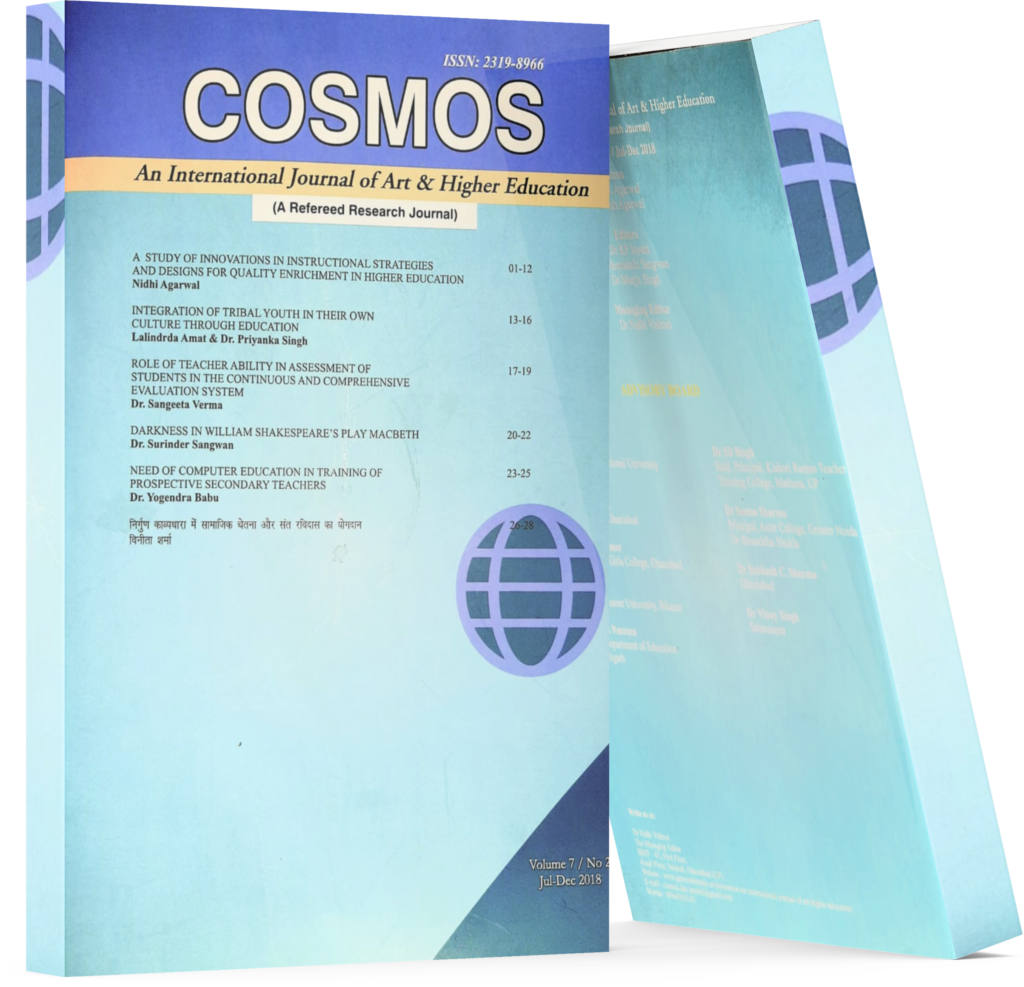A Study Of Innovations In Instructional Strategies And Designs For Quality Enrichment In Higher Education
Keywords:
Augmenting, Collaboration, Strategies, Lucrative, Exponentially, Simulated, Pedagogies, Ingenuity, Implications, RubricAbstract
The present era is an era of academic globalization. Though internationalism in education has been age old, the current wave has a new aspect i.e. augmenting, collaboration & co-operation. We are living in a rapidly changing time. Actually, change is the basic/fundamental rule of nature but this change is always purposeful & provides various new opportunities & makes a co-ordination with emerging trend. In the same way, change is also required in the form of innovations in the instructional strategies and designs, which should be fruitful & lucrative for entire education system. Instructional strategies that influenced teachers’ attitudes toward initiating and sustaining change in their practice. Instructional strategies in the professional development course are successful in affecting teachers’ attitudes toward initiating and sustaining change in their practice. However, the power of Instructional strategies to influence teachers’ attitudes is not inherent in the strategy itself. The course was developed using a new model, The Reflective Conceptual Model (Ray, 2007), and followed the steps in the process. The application of the process allowed the power of instructional strategies to increase exponentially. The reflective mirrors in design path one and design path two enabled the exponential increase of the power of the instructional strategies through application of identified learners’ needs and insertion of characteristics of successful innovations. The power of Instructional strategies (IS) can be increased exponentially through the innovative Instructional design of the course. This rapid and constant change is due to government policies, privatization, liberalization & globalization (LPG) of education, increasing competition, invasion by foreign university & emergence of knowledge society. Due to this change, teaching-learning process have become very typical & complex job. In this process, different instructional strategies, methods, materials are used. Selection of all these depends upon the individual difference, mental ability& nature of work of learner.
Downloads
References
King, N. (2003). Involvement in innovation: The role of identity. In L. V. Shavinina (Ed.), The international handbook on innovation (pp. 619-630). London, UK: Pergamon.
Kostoff, R. N. (2003). Stimulating innovation. In L. V. Shavinina (Ed.), The international handbook on innovation (pp. 388-400). London, UK: Pergamon
Lilly, M. S. (1973). The impact (or lack of it) of educational research on changes in educational practice. In L. Mann & D. Sabatino (Eds.), The first review of special education: Vol. 2 (pp. 203-227). Philadelphia: JSE Press.
Marinova, D., & Phillimore, J. (2003). Models of innovation. In L. V. Shavinina (Ed.), The international handbook on innovation (pp. 44- 53). London, UK: Pergamon.
Melvin, C. ( 1993). Assessing the contribution of professional studies to professional practice, Journal of Professional Studies, 1(1), 13-15.
Merriam Webster Collegiate Dictionary. (2002). Retrieved 7/25/04 from http://www.mw.com
No Child Left Behind Act of 2001. (H.R. 1), 107 Cong., 110 (2002) Enacted.
Robertson, T. S. (1971). Innovative behavior and communication. New York: Reinhart & Winston.
Rogers, E. (1995). Diffusion of innovation (4th Ed.). New York: The Free Press.
Roget. (2002). Thesaurus online. Published by Lexico. Retrieved 7/25/04 from http:// www.thesaurus.com
Shavinina, L. V. (2003). Understanding innovation: Introduction to some important issues. In L. V. Shavinina (Ed.), The international handbookoninnovation(pp. 3-14). London, UK: Pergamon.
Smith, G. F. (2003). Towards a logic of innovation. In L. V. Shavinina (Ed.), International handbook on innovation (pp. 347-365). London, UK: Pergamon.

